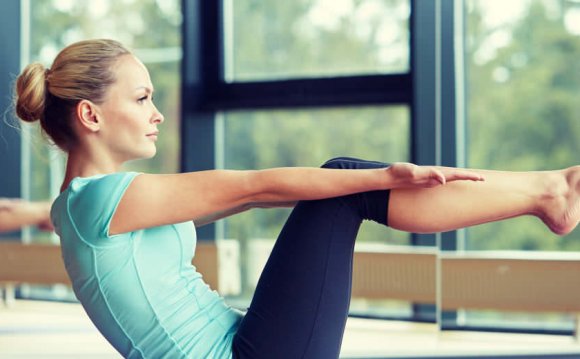
 “I invented all these machines. Began back in Germany, was there until 1925, used to exercise rheumatic patients. I thought, why use my strength? So I made a machine to do it for me. Look, you see it resists your movements in just the right way so those inner muscles really have to work against it. That way you can concentrate on movement. You must always do it slowly and smoothly. Then your whole body is in it.” Joseph H. Pilates
“I invented all these machines. Began back in Germany, was there until 1925, used to exercise rheumatic patients. I thought, why use my strength? So I made a machine to do it for me. Look, you see it resists your movements in just the right way so those inner muscles really have to work against it. That way you can concentrate on movement. You must always do it slowly and smoothly. Then your whole body is in it.” Joseph H. Pilates
“Joe Pilates developed his exercise method and his apparatus hand in hand.”
Jay Grimes, first generation Pilates teacher
While many students are introduced to the Pilates method through a group mat class, the mat exercises represent only a fraction of the extensive system developed by Joseph Pilates. First generation teachers (those who studied directly with Joseph Pilates) have noted that mat exercises were given to students to do at home on the days they did not come to the studio to work out. “Uncle Joe” would occasionally have students perform the mat exercises to demonstrate that they were doing their “homework”, but most lessons at the original studio were done on the apparatus, the term Pilates used for his equipment.
The apparatus used at Studio Body Logic by students taking private or small group lessons is based on Joseph Pilates’ original designs. Each piece is ingeniously designed to both support and challenge students as they perform the “work”, Pilates’ unique system of exercises to strengthen and lengthen muscles throughout the body. The larger pieces of apparatus use springs of varying size and tension to create resistance; the equipment and exercises can be easily adapted to meet the needs of each individual student. The apparatus is designed to work with you, to complement the exercises as you develop strength from a stable core.
Studio Body Logic is proud to offer nearly all of Joseph Pilates’ major pieces of apparatus at both studios, including:
The Universal Reformer: Known simply as the Reformer, this piece of apparatus most frequently associated with Pilates was originally patented in 1924 in Germany. Joseph Pilates built the first wooden-framed reformers himself; after his death, metal framed reformers built by Gratz were most commonly used. A classical reformer consists of a raised rectangular frame with a sled-like carriage that glides along metal rails and uses springs to provide adjustable resistance. Clients perform exercises while lying down, sitting, kneeling, and even standing on the carriage.
SBL offers five reformers in both the Arlington and Alexandria Studios.
The Cadillac (Trapeze Table)/Tower: The Cadillac consists of a raised mat framed by metal posts at each end and across the top of the unit. Attached to the metal frame are a variety of springs and bars used to perform the exercises designed for that apparatus. The frame of the apparatus also helps clients with centering their body as they work.
The Cadillac is the largest and heaviest piece of apparatus, and takes up considerable space in any studio. Romana Kryzanowska, Joseph Pilates’ protégé, designed the Tower unit, which enable students to perform many of the exercises done on the Cadillac while taking up a much smaller footprint in the studio.
There is one Cadillac and three Tower units in Arlington; Alexandria offers one Cadillac and four Tower units.









